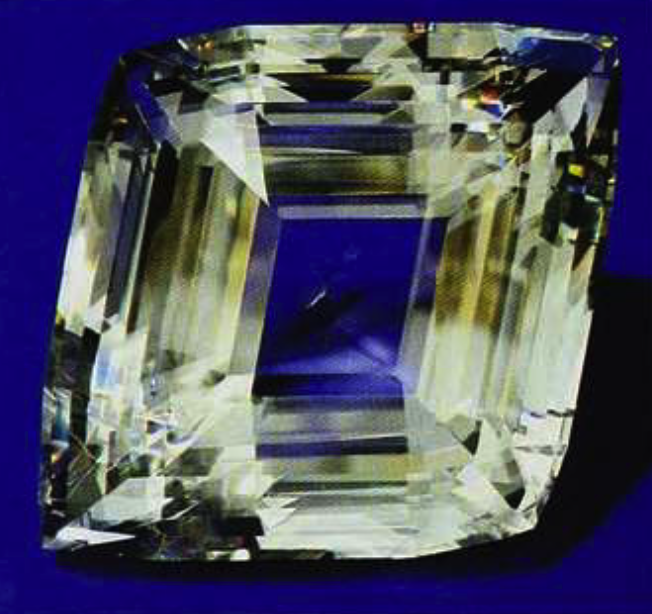Calcite Value, Price, and Jewelry Information
Calcite is common and abundant throughout the world. The material has little intrinsic value since it is not scarce. However, calcite is one of the most difficult of all minerals to be cut because of perfect cleavage in 3 directions. The cost of faceted stone is therefore mostly in the labor of cutting. Normally, a faceted stone breaks during cutting, and the finished gem is much smaller than the originally intended size. Therefore, a cut calcite over 50 carats is extremely rare. Faceted stones cut from material from many localities might turn up, but the lack of scarcity value is not encouraging to potential calcite cutters.
1 Minute Read
Calcite is common and abundant throughout the world. The material has little intrinsic value since it is not scarce. However, calcite is one of the most difficult of all minerals to be cut because of perfect cleavage in 3 directions. The cost of faceted stone is therefore mostly in the labor of cutting. Normally, a faceted stone breaks during cutting, and the finished gem is much smaller than the originally intended size. Therefore, a cut calcite over 50 carats is extremely rare. Faceted stones cut from material from many localities might turn up, but the lack of scarcity value is not encouraging to potential calcite cutters.
Start an IGS Membership today
for full access to our price guide (updated monthly).Calcite Value
Dimorph of ARAGONITE. Also Cobaltocalcite = Sphaerocobaltite = CoCO3; Limestone onyx= Travertine = Flowstone (found in caves); Iceland spar; Alabaster; Marble.
OPTICS: e = 1.486-1.550; o = 1.658-1.740
Uniaxial (-)
OCCURRENCE: Occurs in all types of rocks as the most abundant carbonate mineral on Earth. Found in veins, ore deposits, and as a constituent of rock limestone and marble. Crystals often large (many inches) and transparent. Limestone onyx is the material of most limestone caves, usually banded in shades of tan and brown. (Note: this is not the quartz-variety onyx). Iceland spar is colorless calcite, transparent, sometimes in large masses. The name alabaster refers to gypsum and is incorrect when applied to calcite. Gem material is commonly seen from the following localities: Missouri (colorless), Baja California (brown), Canada, New York, Montana, England, Mexico, Iceland (colorless), and the USSR (pale yellow).
Smithsonian Institution (Washington, D.C): 75.8 and 45.8 (golden-brown, Baja)
Devonian Group (Calgary, Alberta, Canada): 7.5 (Cobaltocalcite, Spain)
Private Collection: 4,440 (colorless); 1156 carats (colorless, twinned); 474 (yellowish, USSR)
National Museums of Canada (Ottawa, Ontario): 606 (light yellow cushion cut, with sulfide inclusions; Bancroft, Ontario, Canada); 168.2 (colorless, Portuguese cut)
Harvard University: 1260 (Bancroft, Ontario, Canada)
Royal Ontario Museum (Toronto, Ontario, Canada): 183 (colorless, Balmat, New York)
Gemological Institute of America: 48 (yellow, USSR)
COMMENTS: Calcite is common and abundant throughout the world. The material has little intrinsic value since it is not scarce. However, calcite is one of the most difficult of all minerals to be cut because of perfect cleavage in 3 directions. The cost of faceted stone is therefore mostly in the labor of cutting. Normally, a faceted stone breaks during cutting, and the finished gem is much smaller than the originally intended size. Therefore, a cut calcite over 50 carats is extremely rare. Faceted stones cut from material from many localities might turn up, but the lack of scarcity value is not encouraging to potential calcite cutters.
Limestone onyx is usually cut into slabs, made into vases, lamps, ashtrays, bookends, and many other decorative objects. It is usually banded in shades of brown, green, and buff. Marble is a metamorphic rock often used in construction and in making decorative carved objects. Coloration in the form of banding and streaks is due to impurities.
NAME: Calcite is derived from the Latin calx, meaning lime.
Joel E. Arem, Ph.D., FGA
Dr. Joel E. Arem has more than 60 years of experience in the world of gems and minerals. After obtaining his Ph.D. in Mineralogy from Harvard University, he has published numerous books that are still among the most widely used references and guidebooks on crystals, gems and minerals in the world.
Co-founder and President of numerous organizations, Dr. Arem has enjoyed a lifelong career in mineralogy and gemology. He has been a Smithsonian scientist and Curator, a consultant to many well-known companies and institutions, and a prolific author and speaker. Although his main activities have been as a gem cutter and dealer, his focus has always been education. joelarem.com
Related Articles
Unique Gem Materials for Jewelry Design
Black Diamond Value, Price, and Jewelry Information
Chameleon Diamond Value, Price, and Jewelry Information
Gray Diamond Value, Price, and Jewelry Information
Latest Articles
800 Years of Mogok: A Celebration in Tenuous Times
What is the Average Gemstone Faceting Yield?
Pyroxmangite Value, Price, and Jewelry Information
How to Identify Emerald Simulants and Synthetics
Never Stop Learning
When you join the IGS community, you get trusted diamond & gemstone information when you need it.
Get Gemology Insights
Get started with the International Gem Society’s free guide to gemstone identification. Join our weekly newsletter & get a free copy of the Gem ID Checklist!
